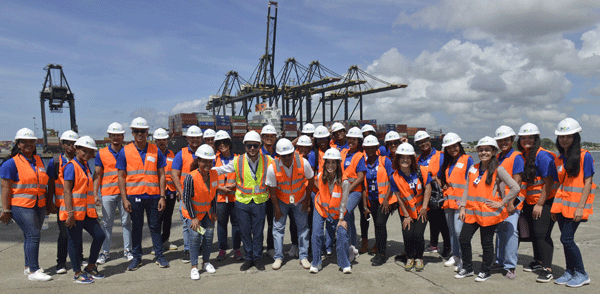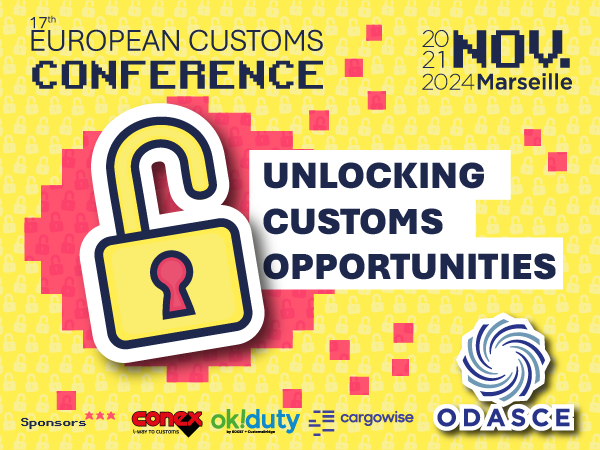A diversity and inclusion approach through traineeships
25 June 2024
By Amada Mendez Guzman, Human Resources Manager, Directorate General of Customs, Dominican RepublicThe Dominican Republic’s Directorate General of Customs (DGA) is striving to be a more diverse and inclusive workplace. The term “diversity” refers to “any attribute people use to tell themselves that another person is different”,[1] such as colour, race, ethnicity, gender, identity, age, physical attributes, sexual orientation and physical ability/disability, and encompasses the concept of neurodiversity, a term that reflects the many and varied differences in how people’s brains function. While diversity speaks to employees’ differences, inclusion is about synergizing those differences to create an environment where all employees feel included, recognized and respected in their organizations.
In the Dominican Republic, the median age of the population is 24.15 years, and the development and empowerment of Dominican youth has always been at the centre of the DGA’s human resource strategy. In 2020, at the beginning of his term in office, the Director General of the DGA, Eduardo Sanz Lovatón, envisioned a programme to enable young people to gain a first job experience through a traineeship at the Customs Administration. Through this immersion, the goal was to give them the opportunity to experience the realities of international trade and to get to know themselves better, including when it comes to what drives them and what sort of career they would like to build for themselves.
This idea soon materialized into a programme enabling young individuals to spend 11 weeks within a department of the DGA. By the end of May 2024, the programme had delivered 10 rounds of traineeships, benefiting a total of 621 individuals.
As a starting point, the DGA’s goal was to design a process that allowed the inclusion of a wide variety of young people in order to provide a richer learning experience for the trainees, their mentors and other DGA staff with whom they would be interacting.
The programme was therefore open to university students and to young people with physical disabilities (who are hard of hearing or visually impaired, for example) or various neurodivergent conditions, i.e. who have been diagnosed with a developmental or learning disorder (as opposed to intellectual disabilities or mental illnesses), such as autism, attention deficit hyperactivity disorder, Tourette’s syndrome or various learning disabilities such as dyslexia (difficulty with language skills, especially reading) and dyscalculia (difficulty with doing basic arithmetic).
“The Customs world belongs to young people because it is the world of foreign trade, languages and technology. To see the enthusiasm, passion, motivation and effort they put into everything they do is very exciting. To see these young people with this desire to learn makes me admire them greatly.”
Eduardo Sanz Lovatón, Director General of the DGA
The DGA advertises the programme on its social media platform, while also contacting a number of universities to inform students and collect applications. Selected candidates then go through a psychometric evaluation enabling the DGA to gain a better understanding of their cognitive skills and personality traits. To join the traineeship programme, students must be in the final year of a university degree course and aged between 21 and 24. They must have a satisfactory academic record and demonstrate that they are actively engaged in the life of their university.

The selection process is different for neurodiverse young people, whose cognitive functioning is not considered typical or “normal”. Indeed, after designing the programme, the DGA became aware of the challenges involved in selecting and integrating individuals with neurodiverse profiles. It therefore reached out to institutions and NGOs whose objective is to assist people with different neurodivergent conditions so that they could provide guidance and support. Joint action plans were developed, defining the respective objectives and roles of the DGA and its partners in the traineeship programme.
Internally, work sessions were held to establish a protocol that would enable the Administration to embrace neurodiversity, so that the experience would be enriching both for those involved in delivering the traineeship programme and for the trainees themselves.
The protocol included the following activities:
(a) holding awareness-raising sessions for employees and supervisors;
(b) working with experts to understand each type of neurodivergence;
(c) identifying potential candidates and interviewing all applicants;
(d) assigning selected candidates to a post according to their competencies, knowledge and interests;
(f) shadowing each trainee/supervisor team for as long as necessary.
The DGA has taken on a total of 47 of the trainees as permanent employees, five of whom have a neurodivergent condition or a physical disability. Supervisors underwent specific training prior to welcoming the neurodiverse trainees, for whom a higher level of supervision is generally required.
Implementing such an inclusive programme was a team effort, and it has had a tremendous impact on the work environment. Staff are now not only more diverse, but they also demonstrate more openness, flexibility, empathy and commitment.
The manager of Economic Studies and Data Analysis, who has welcomed several trainees to his team over the years, said that “Trainees bring freshness, enthusiasm and new ideas that stimulate creativity in the team; they have certainly made an impact on our operations and work dynamics.”
One of the students taken on after her traineeship highlighted how critical it is at a young age to surround yourself with good people from whom to receive advice. “The road can be difficult, but that doesn’t mean you have to walk it alone,” she said. “My experience at the DGA is still short, but it has strengthened me considerably. I’ve learned a lot about myself, and I’m proud of what I’ve achieved. I’m aware that very few people my age would be able to say the same.”
More information
Pasantias@aduanas.gob.do
[1] Williams, K. Y., and O’Reilly, C. A., III. (1998). Demography and Diversity in Organizations: A review of 49 years of research. Research in Organizational Behavior, Vol. 20, pp. 77-140.


